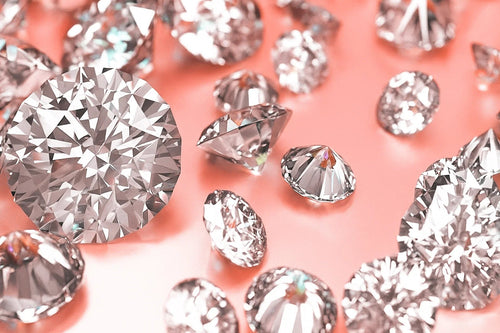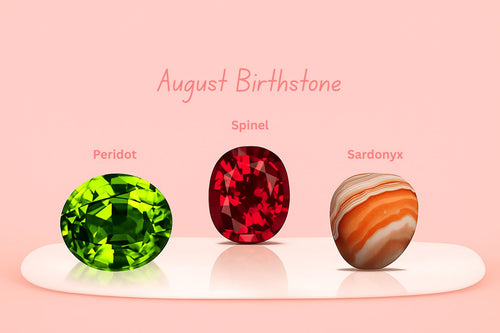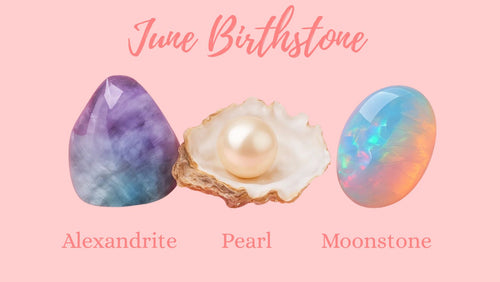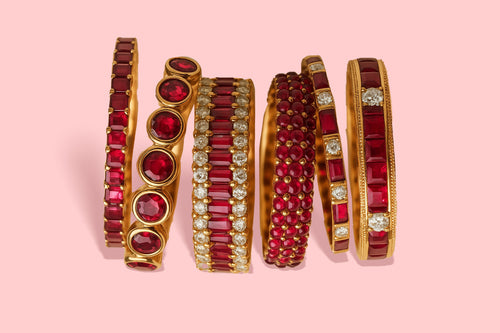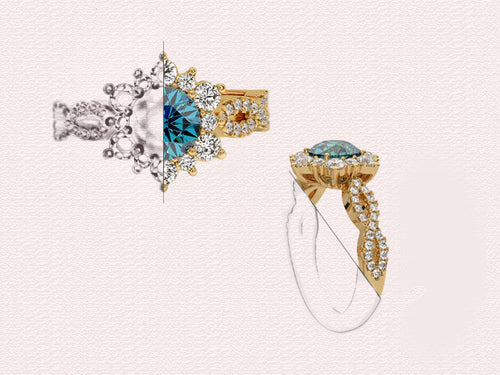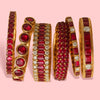Visuals aren't just nice to have in today's digital-first market; they're necessary, especially in fields like jewelry where looks are everything. No matter if they are traditional stores that are going online or new companies that were born and raised online. Jewelry brands all have to figure out how to show off their pieces in the most interesting and beautiful way. The argument about whether jewelry should be rendered or photographed is more important than ever in this situation.
Picture-taking and drawing both try to show off a piece of jewelry in the best light possible. It's just that they do it in very different ways. Rendering uses advanced computer-generated imagery (CGI) to make very realistic pictures of jewelry. Often before the jewelry even appears in real life. Photography takes pictures of finished jewelry in real life.
Say you're a jewelry designer, maker, or store owner who wants to know which visual method will work best for your business. That's great! This blog will help you understand the main differences, advantages, and best times to use each one. Let's talk about the pros, cons, and real-world effects of making jewelry vs. photographing it.
What is Jewelry Rendering?
Jewelry modeling is the process of using computer software to make very realistic digital pictures of jewelry designs. It lets jewelry makers show off rings, necklaces, earrings, and other items in great detail before they are made. Rendering makes it easy to see every angle, sparkle, and metal texture.
This method works great for making custom jewelry or starting a new line. It's not necessary for jewelers to use rough sketches or their imaginations. Instead, they can show real pictures that make customers feel more confident.
What is Jewelry Real Photography?
Jewelry photography is the skill of taking clear, detailed pictures of jewelry. Its main goal is to show off the real beauty, skill, and small details of rings, chains, earrings, and bracelets. To bring out the shine, cut, and color of each piece in the most striking way, you need the right lighting, sharp focus, and the right angles.
Professional jewelry photography is a great way to make a good first impression on the web and in marketing materials. Customers often decide what to buy based on pictures, so it's important that the pictures are clear and look good.
Comparing Jewelry Renderings and Photography
Both jewelry renderings and jewelry photos are meant to show off pieces in a beautiful way, but they are not the same thing. With renderings, which are digital pictures made with special software, jewelry makers can show off their designs before the jewelry is actually made.
Jewelry photography, on the other hand, uses a camera to take pictures of real, finished jewelry. It lets people see how the jewelry really looks in real life or in a studio, which builds trust with buyers.
| Aspect | Jewelry Renderings | Jewelry Photography |
|---|---|---|
| Definition | Digital images created with 3D software | Real photos taken of actual jewelry pieces |
| When Used | Before production, for custom designs and previews | After production, for marketing and sales |
| Control | Full control over lighting, angles, and details | Limited by real-world lighting and conditions |
| Realism | Can look hyper-realistic but slightly artificial | Captures natural textures, reflections, and flaws |
| Cost | Lower for large collections, one-time software cost | Higher due to photoshoots, equipment, editing |
| Purpose | Visualize ideas, pre-sell concepts | Build trust and emotional connection with buyers |
| Editing Needs | Heavy digital creation and adjustment | Minor touch-ups for clarity and quality |
| Customer Impact | Great for designs and options before making pieces | Better for showcasing final products authentically |
Custom jewelry design is our specialty.
In our Ventura Avideri Workshop, all of our handmade jewelry is made right there on the spot.
We have full control over this, and the effects are great for you!
Jewelry CAD
Jewelry CAD (Computer-Aided Design) is a digital design process used to create precise, 3D models of jewelry. It allows for detailed customization and visualization before crafting the final piece.
Jewelry Render
Jewelry Render refers to the final, physical piece crafted from a CAD design. It transforms the digital concept into a tangible item using materials like gold, diamonds, or gemstones, ready to wear and cherish.


Jewelry renders vs Real Jewelry
Jewelry renders show a basic digital design. Real jewelry is polished, shaped, and finished by hand, making it smoother, brighter, and more detailed:
- Edges are polished after casting.
- Prongs are shaped securely around the stones.
- Fine details like beading or engraving are added by hand.
Renders are digital previews that don't show the final hand-finishing. Real jewelry is polished, prongs are shaped to the stones, and fine details like engraving are added to bring the piece to life.
Contact Us
What makes jewelry renders different from finished jewelry
Jewelry renders are digital previews that often differ from the final handcrafted piece. Gemstone colors may appear different, metal finishes look more polished in reality, and intricate settings like pavé and milgrain details are carefully added by hand, bringing more life and depth to the finished jewelry.
- Gemstone appearance in renders may not fully match the real-life sparkle or depth.
- Metal finishes may look flat or uniform in renders but are more textured and reflective in real jewelry.
- Pavé settings in renders show stones sitting flat; real jewelry has detailed cutting and prong work.
- Milgrain details are added by hand in real jewelry, while renders may not capture this fine texture.


